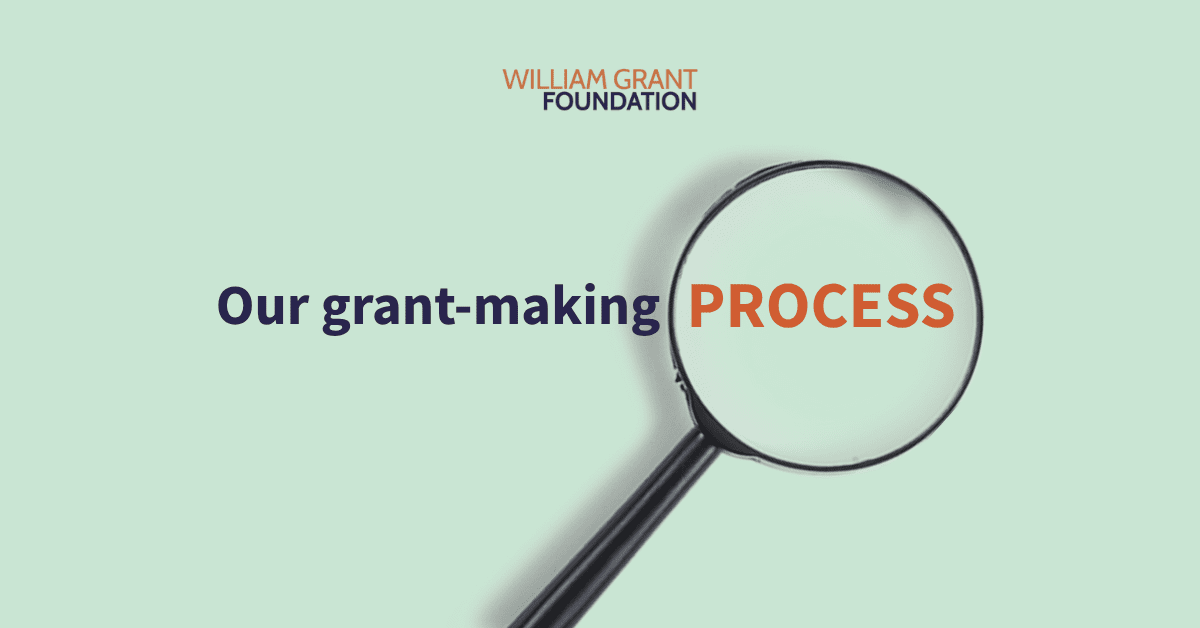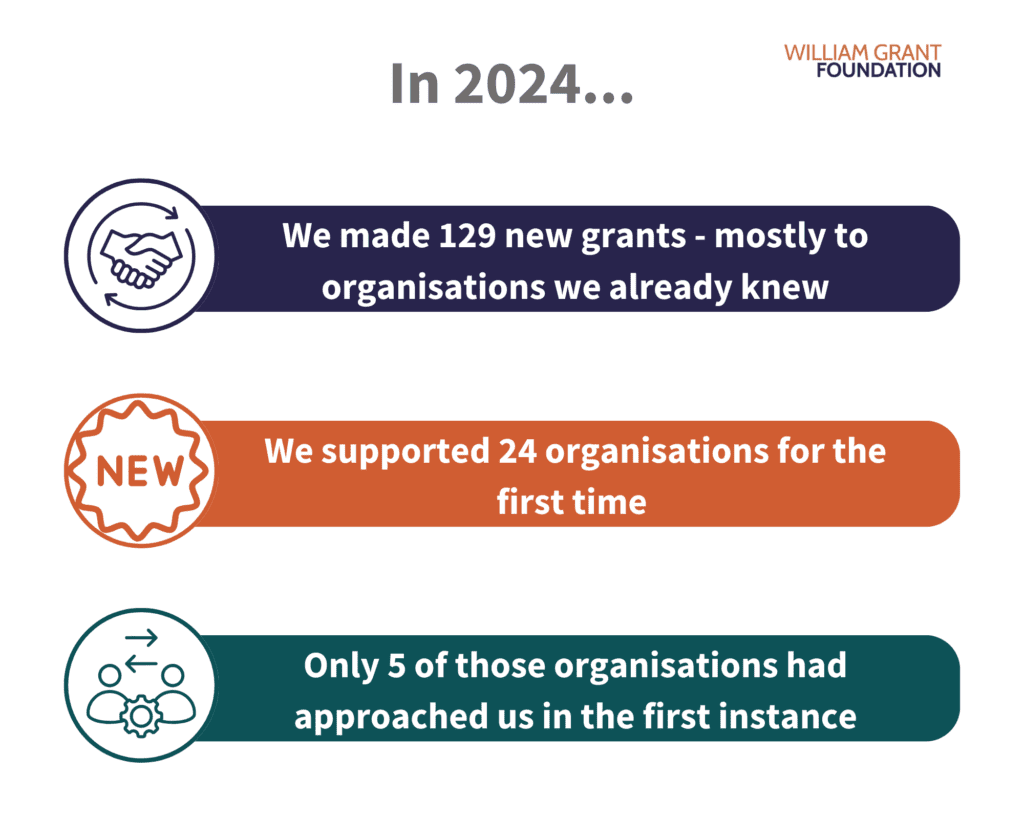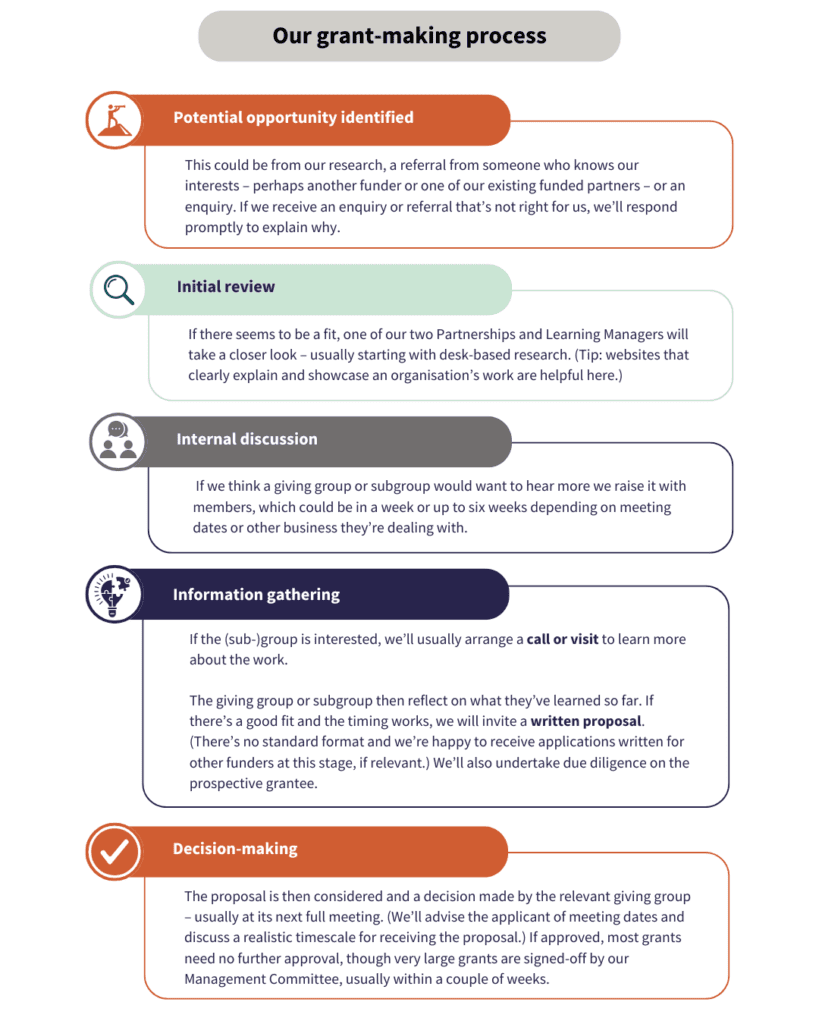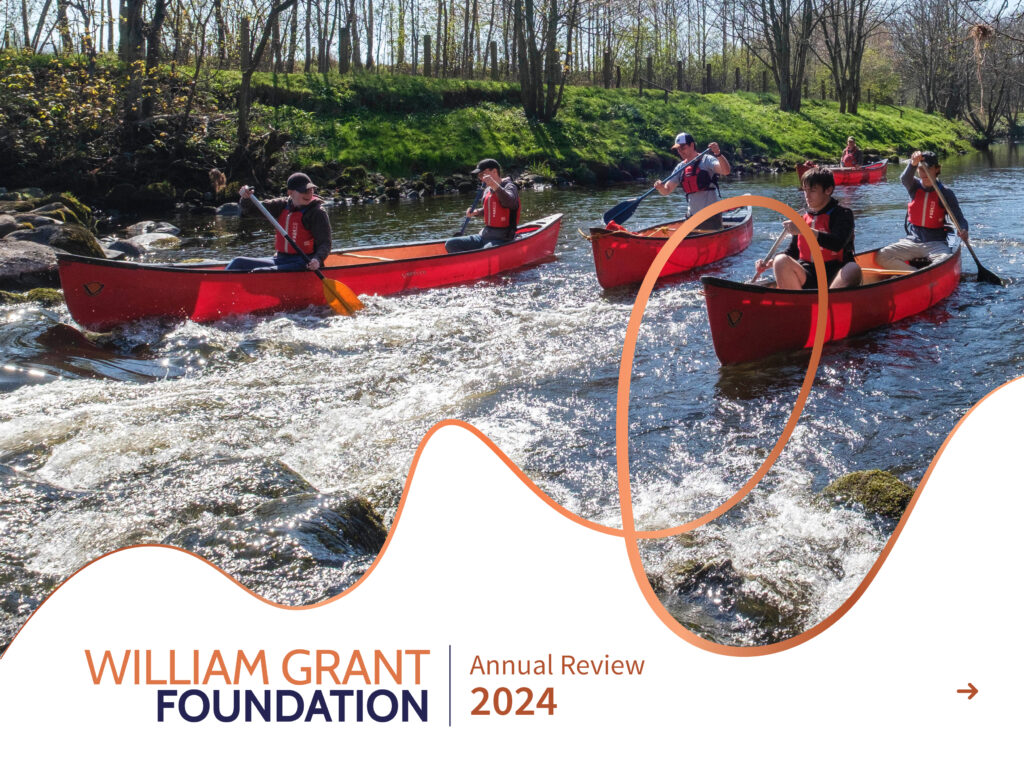27 May 2025
Clarifying our approach to new funding partnerships.
Jane Churchill

“The process from proposal submission to grant award felt slightly unclear at points.”
This was one of the pieces of feedback we recently received from our funded partners, and we thought it was worth addressing directly.
I’ve been applying for funding in Scotland for 25 years, working across areas like community health, culture, youth, and capital development, in both urban and rural settings. I’ve likely applied to nearly every funder available to Scottish charities and social enterprises – which gives me a valuable perspective in my current role as Partnerships and Learning Manager here at the William Grant Foundation.
This feedback from a grantee really resonated with me. Working at the Foundation has given me a clear understanding of how our process works, but I’ll be honest – it might not always be so clear to those engaging with us for the first time, especially if you’re more familiar with open funding programmes with set dates for deadlines and decisions.
Identifying and inviting potential partners
Firstly, it’s important to note that we are an invitation-only funder, using our networks and research to identify potential partners. Every funding relationship begins with a conversation and we spend time getting to know an organisation before deciding if we will invite a proposal for funding. This approach might be different from some funders, but we believe it helps us to make more informed decisions and have more time to focus on partnerships that are aligned with our interests and approach.
This recent article by IG Advisors, In defense of no unsolicited applications, makes thoughtful points about this approach to grant-making. I identified with their reflections that a proactive approach can help funders build deeper, more meaningful relationships with grantees and ensure that they are adding the most value with their funding. For us, it also helps focus our time and energy where they can have the greatest impact, rather than thinly spreading resources responding to a wide range of requests.
Responding to unsolicited enquiries
That said, we do welcome hearing from anyone whose work aligns with our interests – especially if it helps us learn or introduces us to promising or effective initiatives we might not otherwise come across.
Every enquiry that comes into our inbox is carefully reviewed. If there’s clear alignment with our interests, we may explore it further to learn more and we do sometimes invite funding proposals from organisations that contact us like this, though this is the exception rather than the norm. Sometimes, budget constraints or our existing pipeline of opportunities mean we can’t take an opportunity forward at that time, even if it’s a good fit.
Here is an illustration of how that breaks down.

Exploring new funding opportunities
Decisions about most of our grants are made by one of four ‘giving groups’ – you can read more about our structure and governance here.
Each group is responsible for one of our key themes and they all operate a little differently, with varying structures and meeting schedules. The groups meet approximately quarterly, and three of them also have subgroups on specific focus areas that meet in between. Their work is an ongoing mix of exploring new opportunities, making decisions on grant awards, learning from our existing partners, reflection and strategy development. So, for us, grant-making is a rolling process that doesn’t operate to fixed deadlines or timescales.
Here’s a simplified outline of how it works when we’re considering a new funding opportunity:

Being clear and responsive
Our typical process does involve a few rounds of information gathering and review, so can take up to a few months to proceed from initial investigations to a decision – occasionally longer. However, we also try to make it proportionate and recognise that sometimes acting with urgency is necessary if a grant is to be of most benefit to the recipient. Not having a rigidly prescribed process means we can tailor it to expedite this, if necessary.
Throughout, we aim to operate in an open and trusting way (you can read more about what this means to us here). This means we aim to keep prospective partners informed about next steps and likely timeframes.
Valuing feedback
We hope this gives you a clearer understanding of our grant-making process. Feedback is crucial to us, as it helps us improve how we work and communicate. The comment at the start of this blog came via one of the anonymous surveys we ask our funded partners to complete at different points during our relationship. But we welcome comments and suggestions from anyone who engages with us – whether we can fund you or not. Feel free to get in touch at foundation@wgrant.com.
Having spent thousands of hours completing funding applications, my feeling is that this approach is one that better respects people’s time. It has been a pleasure to be part of a Foundation that is genuinely interested in learning more about its areas of interest and how it can best contribute to meaningful change.
Jane has over 25 years’ experience in community development, social enterprise and funding in Scotland, and works as a freelance consultant and mentor to charities and community organisations. She’s currently working with the Foundation as Partnerships and Learning Manager, leading on our Scottish Culture and Heritage and Health and Social Causes themes whilst Rowan Boase is on maternity leave.



